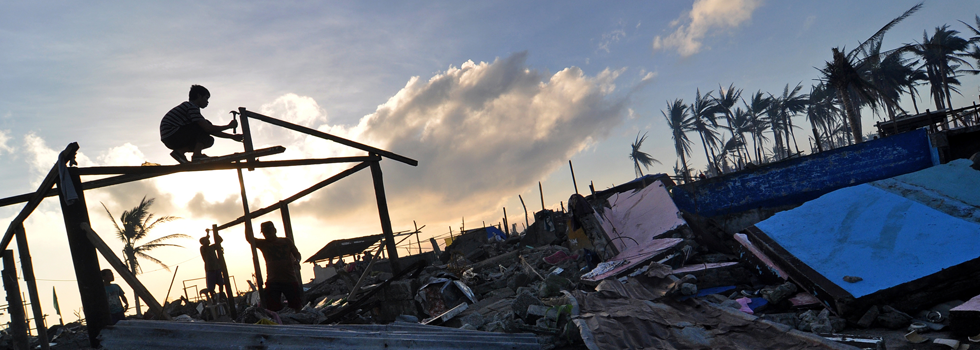
In FY14, Mozambique benefitted from a comprehensive risk assessment of schools, resulting in a nationwide investment plan to rehabilitate or build 30,000 classrooms using disaster-proofing guidelines. Honduras and Nicaragua were qualified for $24 million of World Bank support through the Caribbean Catastrophe Risk Insurance Facility, a multi-country risk pool that enables member countries to manage budget volatility in the immediate aftermath of disasters. And in Djibouti, a new system for disaster risk communications and emergency protocols is revolutionizing the way that country deals with drought and floods—a flash flood in March 2013 resulted far fewer casualties (13) compared with a similar flood in 2004 claiming 230 lives.
 These results, driven by projects supported by the Global Facility for Disaster Reduction and Recovery (GFDRR), are some of the many accomplishments in scaling up disaster risk management (DRM) activities detailed in the GFDRR Annual Report 2014: Bringing Resilience to Scale.
These results, driven by projects supported by the Global Facility for Disaster Reduction and Recovery (GFDRR), are some of the many accomplishments in scaling up disaster risk management (DRM) activities detailed in the GFDRR Annual Report 2014: Bringing Resilience to Scale.
Covering the Facility’s activity over the course of the previous fiscal year (July 2013 to June 2014), the report highlights progress and results achieved against GFDRR’s work plan, which is organized according to Five Pillars of Action: Risk Identification, Risk Reduction, Preparedness, Financial Protection, and Resilient Recovery. The organization’s recent DRM initiatives are profiled, showcasing the integral role of partnerships in fulfilling GFDRR’s mission.
Acting as the World Bank’s institutional mechanism for DRM, GFDRR works with a wide range of partners including donors, other development agencies, national and local governments, the private sector, and civil society to mobilize resilience-oriented action ahead of, during, and in the wake of natural disasters.
Global losses from natural disasters average nearly $200 billion per year, and countries continue to demand solutions that scale quickly. In FY14, GFDRR grants and in-kind assistance helped low-capacity countries secure almost $1.5 billion in World Bank financing, on top of additional funding from other partners; GFDRR is bringing scale to resilience efforts around the globe.
 As detailed in the report, GFDRR issued 85 new grants worth a total of $60 million in FY14—a 31% increase over the previous year. The full portfolio of projects under implementation consisted of 232 grants worth approximately $168 million. GFDRR remains focused on 20 priority countries, which make up 71% of grants—Sub-Saharan Africa is the largest regional recipient.
As detailed in the report, GFDRR issued 85 new grants worth a total of $60 million in FY14—a 31% increase over the previous year. The full portfolio of projects under implementation consisted of 232 grants worth approximately $168 million. GFDRR remains focused on 20 priority countries, which make up 71% of grants—Sub-Saharan Africa is the largest regional recipient.
In addition, through international events like the Understanding Risk Forum—which brought together over 800 participants in June and July 2014—and the Resilience Dialogue Series, GFDRR continues to open up valuable space for collaboration across a diverse set of stakeholders, from disaster risk management experts and leaders from academia, government, and the private and nonprofit sectors.
FY14’s myriad international crises, in Iraq, Syria, Ukraine, as well as Gaza and Western Africa among others, strained the development aid budgets of many GFDRR donor partners. With this in mind, GFDRR has been selective in pursuing initiatives that both justify its mission and maximize its resources, an approach that has steadily made it a partner of choice for low-capacity countries seeking DRM knowledge, bandwidth, and innovation.
GFDRR looks forward to building upon the accomplishments of FY14, working closely with donors and partners to ensure the ongoing implementation of DRM initiatives in the places most vulnerable to disasters. Over the course of the year, GFDRR has proactively applied its knowledge, experience, and convening power to help ensure that the Sustainable Development Goals and the successor to the Hyogo Framework for Action on disaster resilience—both set to commence in 2015—are aligned and include key language and DRM targets. By sustaining and expanding global commitments to bring disaster resilience to scale, the DRM community has the potential to make real, sustainable change in the lives and futures of the world’s poorest and most vulnerable.
